No need to be an electrician to enjoy the benefits of LED strip lights. With easy peel-and-stick adhesive backing, installation is a breeze. Trim them to fit your specific space, and watch as your room comes alive with dynamic lighting. From under-cabinet accents to mesmerizing ceiling displays, the possibilities are only limited by your creativity.LED strip lighting has gained significant popularity for its versatility and ability to transform spaces with stunning lighting effects. Whether you're looking to add ambient lighting, accentuate architectural features, or create a unique atmosphere, LED strip lighting offers endless possibilities. In this blog, we will explore the capabilities of LED strips and provide a step-by-step guide to selecting and setting up your lighting system.
What can LED Strips Do?
LED strips are flexible, adhesive-backed lighting strips that contain multiple tiny LEDs. Here are some key applications and benefits of LED strip lighting:
Ambient Lighting LED strips can be used to create subtle and uniform lighting in any space, from residential homes to commercial establishments, providing a soft glow that enhances the overall ambiance.
Accent Lighting: By strategically placing LED strips, you can highlight architectural features, artwork, or decorative elements, adding depth and drama to your space.
Versatile Mounting: LED strips can be easily installed in various locations, such as under cabinets, along walls, inside coves, under staircases, and even outdoors. Their flexibility allows for seamless integration into any space.
Energy Efficiency: LED strip lighting is highly energy-efficient, consuming minimal electricity compared to traditional lighting solutions. This not only saves you money on your energy bills but also reduces your carbon footprint.
How to Select Your LED Strip Lighting?
Selecting the right LED strips Lighting, system involves several considerations. Here's a step-by-step guide to help you make an informed decision:
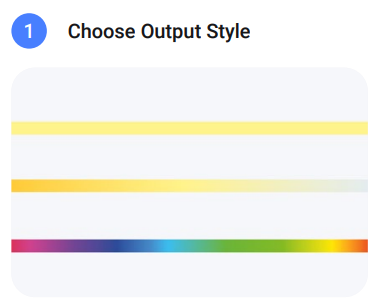
Choose Output Style: Determine whether you need a single-color LED strip, white LED strip, or color-changing RGB/RGBW LED strip. The choice depends on the desired lighting effect and mood you want to achieve.
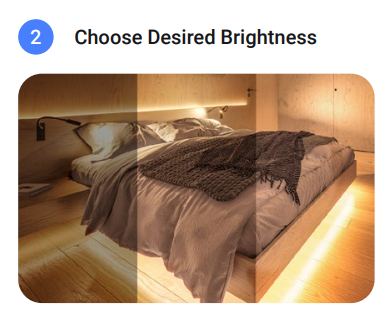
Choose Desired Brightness:
LED strips, come in various brightness levels measured in lumens. Consider the space and purpose of the lighting to select the appropriate brightness level.
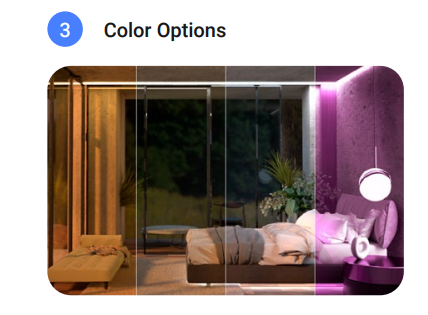
Colour Options: If you opt for colour-changing LED strips, decide whether you prefer RGB (red, green, blue) or RGBW (red, green, blue, white) LEDs. RGBW offers a wider range of colour choices, including true white lighting.
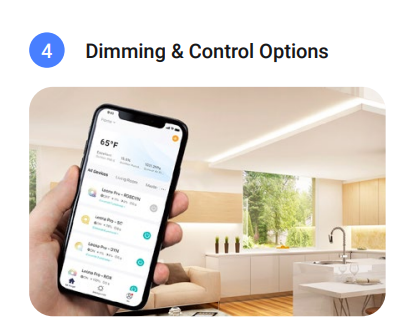
Dimming and Control Options: Determine whether you require dimming and control capabilities for your LED strip lights. Many systems offer remote control options, wall-mounted controllers, or compatibility with smart home automation systems.
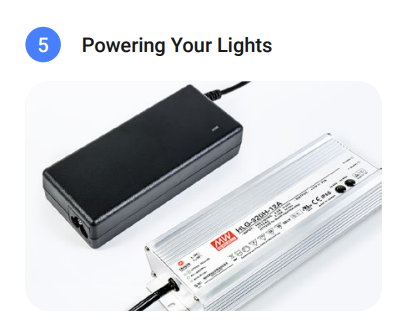
Powering Your Lights: Consider the power source and determine if you will connect the LED strips directly to a power outlet or require a transformer or power supply. Ensure that the power source can handle the total wattage of the LED strips.
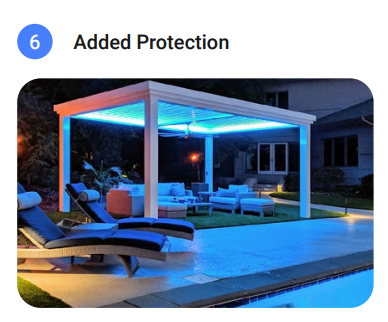
Added Protection: For outdoor applications or areas prone to moisture, choose LED strips with IP-rated coatings to ensure durability and protection against water or dust.
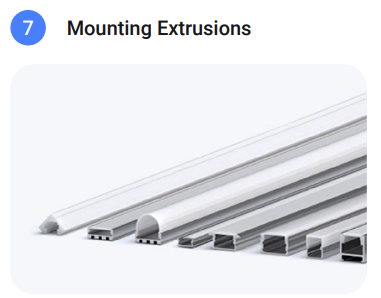
Mounting Extrusions: Based on where and how you plan to install the LED strips, select appropriate mounting extrusions or channels. These provide a clean and secure way to attach the strips and also help with heat dissipation.
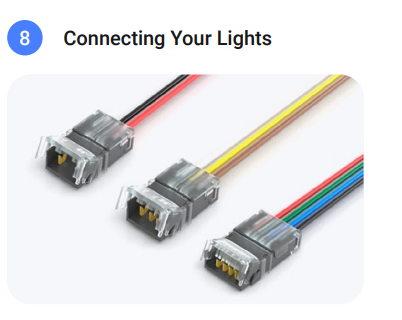
Connecting Your Lights: Determine the length and configuration of LED strips required and explore the options for connecting multiple segments, including soldering, connectors, or pre-made extension cables.
Are LED Strips Weatherproof?
LED strips, can be weatherproof or non-weatherproof, depending on the specific product and its intended use. Here is some information that will help you understand the weatherproofing options for LED strips:
Non-Weatherproof LED Strips: Non-weatherproof LED strips are not designed to withstand exposure to moisture, water, or harsh outdoor conditions. They are typically used for indoor applications where there is no risk of contact with liquids or excessive humidity. Non-weatherproof LED strips are commonly used for accent lighting, under-cabinet lighting, and other indoor decorative lighting projects.
Weatherproof LED Strips: Weatherproof LED strips are specifically designed to withstand exposure to moisture, water, and other outdoor elements. They are built with protective coatings, encapsulations, or casings that provide a barrier against moisture and enhance durability. Weatherproof LED strips are ideal for outdoor applications where the strips may come into direct contact with rain, snow, or humidity. They are commonly used for landscape lighting, pathway lighting, outdoor signage, and architectural lighting.
IP Ratings for Weatherproof LED Strips:
Weatherproof LED strips are often rated using the Ingress Protection (IP) system, which classifies and rates the degree of protection against the intrusion of solid objects and liquids. The IP rating consists of two digits. The first digit ranges from 0 to 6 and indicates the level of protection against solid objects, while the second digit ranges from 0 to 9 and represents the level of protection against liquids.
For example, common ratings for weatherproof LED strips include:
IP65: These LED strips are protected against low-pressure water jets and dust ingress. They can withstand water splashes and light rain but are not suitable for submersion.
IP67: These LED strips are protected against the effects of temporary immersion in water up to a depth of 1 meter. They are suitable for outdoor use where exposure to rain or occasional submersion may occur.
IP68: These LED strips offer the highest level of waterproofing. They are protected against continuous immersion in water beyond 1 meter, making them suitable for underwater lighting applications or areas prone to heavy rain or water exposure.
When purchasing weatherproof LED strips, it is important to check the specific IP rating mentioned by the manufacturer to ensure compatibility with your intended use and level of exposure to moisture or water.
Can I cut the LED Strip Lights to the desired length?
LED strips are cuttable to the length you want. Cutting LED strip lights is a typical method to guarantee a perfect fit in any space and to modify the illumination for specific purposes. Usually, LED strips are split into circuits or segments, and there are certain cut points where cutting the strip is safe. Every cut line designates the conclusion of one circuit and the beginning of the next.
It's crucial to adhere to the manufacturer's instructions while cutting LED strips to guarantee the correct cutting technique and prevent strip damage. While some LED strips can only be cut at certain locations along the specified cut lines, others can be cut anywhere along those lines. To get a clean cut, it's advised to use a sharp utility knife or pair of scissors.
To preserve electrical functioning, you might need to check that the cut ends of the LED strip are securely sealed or linked after cutting it to the required length. Depending on the LED strip in question and how it will be used, this may need soldering, using connectors, or resealing the ends with waterproofing materials. You must handle the electrical connections carefully and get advice from experts if needed.
Do LED lights consume more electricity?
The answer is No, using LED lights doesn't mean using more power. When compared to conventional lighting solutions, LED lights are renowned for their low power consumption and energy efficiency. Compared to conventional incandescent or fluorescent lights, LED lights consume a lot less electricity to provide the same quantity of light. This is because LED lights utilize less energy as heat since they are far more effective at turning electricity into light. LED lights typically use 75 percent less energy than incandescent bulbs and 30 to 80 percent less energy than fluorescent lights.
A further factor in LED lights extended longevity is their energy efficiency. LED lights have a 25-fold greater lifespan than conventional incandescent bulbs and a 10-fold longer lifespan than fluorescent lights. This lowers the need to change bulbs more frequently and, over time, results in even greater energy savings.
In addition to providing greater control over illumination levels, LED lights, are also easily dimmable, which further reduces energy usage depending on the desired brightness level. Furthermore, a variety of color temperatures for LED lights enable customers to select illumination alternatives that are either warmer or colder according to their preferences or requirements.
Explore the range of LED Strip Lights at LightOnline
LED Strip Lights—Ultimate Guide to LED Strip Lighting